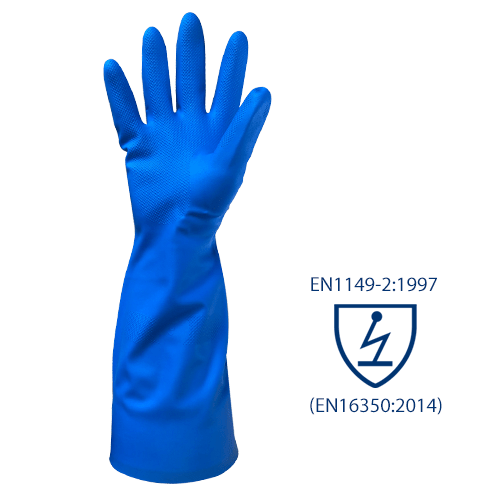What is Twaron?
Manufacturers have invested heavily in developing glove materials and coating technologies that will protect user’s hands even in the most extreme environments. Twaron-containing gloves are the fruits of their labour – gloves that use trademark Twaron fibres to provide exceptional protection in a variety of standard work situations.
What Is A Twaron Glove?
Twaron is a synthetic fibre developed in the 1970s by the Dutch company AKZO, now called Akzo Industrial Fibers. In arrived just a couple of years after American conglomerate DuPont announced that it had created Kevlar. Twaron gloves use Twaron material to protect the wearer against extreme heat. Users either wear gloves with the fabric built-in as part of their construction or as sleeves worn alongside regular gloves to protect the forearms from hot objects.
Twaron is a simple form of AABB para polyaramide with a slightly different chemical structure to its more famous sibling. It offers high-impact, scratch and cut resistance, making it the ideal material for heavy-duty glove-making. Weight for weight, it is five times stronger than steel.
Is Twaron Better Than Kevlar?
Twaron and Kevlar are similar materials, and both offer a high level of protection for the wearer. Commercially, Kevlar was more of an immediate success than Twaron, with Akzo (and later the Teijin Company) struggling to commercialize it.
Other than their commercial viability, the differences between Kevlar and Twaron gloves are relatively small. Both use synthetic fibres to provide users with protection that are five times stronger than steel. And both have high tensile strength and puncture resistance, making them an ideal material for manual handling. Their chemical and weave structures are almost identical too, with the only real differences being in the manufacturing methods DuPont and Teijin Company use.
Kevlar is the more famous of the two because of its numerous high-profile military applications, such as in body armour. Many bicycle tyre manufacturers also use Kevlar because of its anti-pierce properties. Twaron is less widespread in these markets.
What Can Twaron Protect Your Hands From?
Thanks to its material properties, Twaron can protect your hands from a wide range of threats that they might face in the working environment. Most famously, Twaron protects the hands from heat, but the fibres also offer a high level of chemical resistance too.
Polyaramide fibre is more than five times as strong as steel, weight-for-weight, which improves cut resistance when handling sharp objects – a feature most welcome among people who use these gloves for handling broken glass, ceramics or metals.
Twaron, like Kevlar, can accommodate high impacts and friction. For that reason, it is also a good choice for anyone handling heavy or abrasive objects. Most Twaron-containing gloves come with an elasticated fit to secure the glove in place so it won’t fall off during use.
Twaron famously has “no melting point” making them an incredibly heat resistant glove, with the material only starting to degrade at around 500 C. If you’re in the market for a heat-resistant glove, look for the gloves rating under the EN407:2003 standard. The higher the heat level rating, the more protected the wearer.





